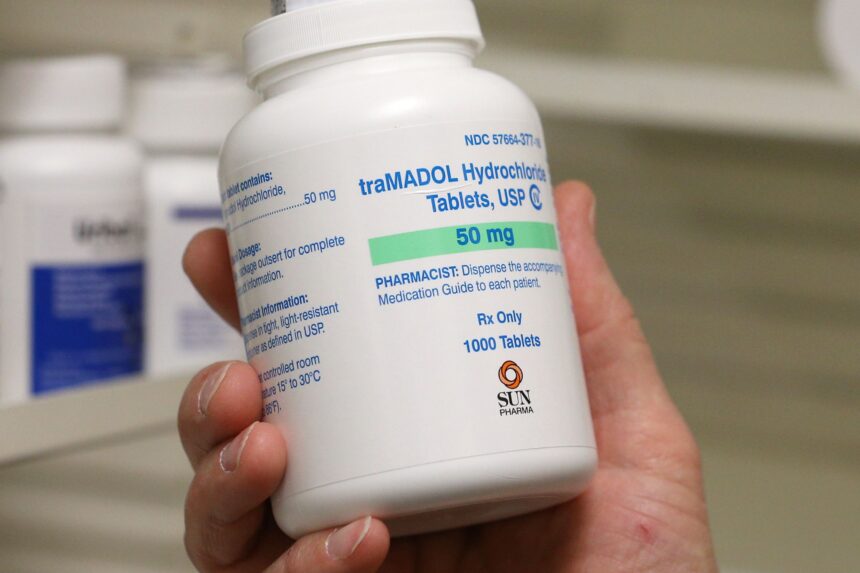A recently published study has raised significant concerns regarding the effectiveness of tramadol, a commonly prescribed synthetic opioid, for managing chronic pain. The findings, released in the journal BMJ Evidence-Based Medicine, suggest that the risks associated with tramadol may outweigh its limited benefits.
The study reveals that while tramadol may exhibit a slight analgesic effect on chronic pain, the evidence supporting its efficacy is weak. Dr. Janus Jakobsen, the lead author and a clinical professor at the University of Southern Denmark, expressed his concerns: “The findings indicate that the benefits of tramadol are questionable or, at the very least, uncertain. Furthermore, evidence suggests the presence of potentially harmful effects.”
As a medication, tramadol can pose serious side effects, including cardiac issues such as chest pain and congestive heart failure. Therefore, Jakobsen advises consulting healthcare providers for alternative treatment options tailored to individual pain management needs.
Worldwide, an alarming estimate suggests that around 60 million individuals are affected by opioid addiction. While tramadol is often marketed as a safer alternative compared to stronger opioids, its potential for harm cannot be overlooked. The study indicates almost 12 million daily doses were consumed globally between 1990 and 2009, highlighting its widespread use.
The Danish research team analytically assessed 19 clinical trials that compared tramadol to a placebo in treating various chronic pain conditions, including osteoarthritis and diabetic nerve pain. These studies, conducted from 1998 to 2024, included over 6,500 participants aged between 47 and 69.
In their systematic review, the researchers found that tramadol not only failed to provide significant pain relief but also increased the risk of non-serious and severe side effects. Issues ranged from nausea and dizziness to more severe cardiac problems and neoplasms, which are abnormal cell growths that may lead to tumors.
Jakobsen noted the inconsistency in how pain relief was measured using a visual scale, stating, “Although statistical analyses may reveal differences in pain scores between patients, these differences may be so small that they are not perceptible to the patients themselves.” To evaluate tramadol’s clinical significance, the study established a “minimal important difference” of one point on a pain scale of 0 to 10.
Unfortunately, the beneficial effects of tramadol were reported to fall below this threshold, casting further doubt on its use in chronic pain management. Dr. Michael Hooten, an anesthesiologist at Mayo Clinic, noted the study’s findings align with his clinical experience, indicating that longer-term opioid use can lead to tolerance and other complications, making them less effective for chronic pain treatment.
“I don’t use a lot of tramadol, because I know there’s going to be a lot of adverse effects. I know the pain-reducing effects are going to be minimal,” said Hooten. He highlighted that this may differ from other pain specialists’ opinions, noting the complexity of opioid treatment.
Jakobsen cautioned that the evidence could overstate tramadol’s benefits due to high biases present in many of the included trials. Only two trials had minimal bias, raising concerns about the overall efficacy presentation. Despite its popularity, he emphasized, “The use of tramadol and other opioids should be minimized as much as possible. Our study provides evidence in support of this recommendation.”
However, the study has limitations, particularly in assessing long-term outcomes since most trials were short-term, lasting 12 weeks or fewer. Dr. Jason Chang of Columbia University remarked that these factors complicate the understanding of tramadol’s long-term safety and effectiveness.
“Tramadol is not a magic bullet – on average, it provides only modest pain relief, and it carries real risks, including nausea, dizziness, constipation, and, in rare cases, more serious complications like cardiac events or seizures,” Chang explained. He advises that tramadol may be effective for select patients who cannot tolerate NSAIDs but should only be prescribed with clear functional goals and closely monitored.
Dr. Erika Schwartz, an internist, reaffirmed the study’s findings, stating, “This study confirms what I’ve observed in clinical practice for years – tramadol has been marketed as this ‘safer opioid’ alternative, but the reality is far more complicated.”
The U.S. faces a chronic pain epidemic, with approximately one in five adults suffering from persistent pain. Dr. Sanjay Gupta, a CNN medical correspondent, suggests various alternative management strategies, including meditation, yoga, and dietary changes, that can alleviate pain without relying on medication.
Schwartz insists on thorough patient evaluations before prescriptions, stating, “The real tragedy is that millions of patients have been prescribed tramadol when what they needed was someone to investigate the actual cause of their pain. We’ve traded real solutions for prescription pads, and patients are suffering for it.”
In summary, the new research indicates a pressing need for more cautious tramadol prescriptions and a shift toward exploring alternative pain management strategies.






